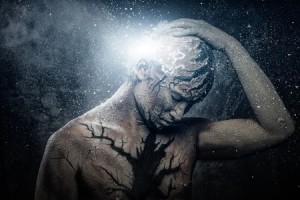The Brain and God

Have you ever wondered what happens in your brain when you pray or meditate? Andrew Newberg, who is a neuroscientist did wonder. Working with psychiatrist Eugene d’Aquili in the early 1990s, he began using SPECT (single photon emission computed tomography) to photograph brains during religious experiences. They found volunteers from three very different religious groups: Tibetan Buddhist monks, cloistered nuns and Pentecostals who speak in tongues. “If the brain houses such things as souls, they did locate them: Everywhere.”
Newberg first scanned the brains of the monks and the nuns. Their frontal lobes, the part of the brain Newberg referred to as “the attention area” lit up. The thalamus, which is a pea-sized area that sits at the top of the brain stem, also lit up. Among other things, the thalamus sends sensory information to the frontal cortex where “heavy thinking” occurs. “Whatever was happening in meditation, the thalamus was making it feel very real.” But the real surprise was elsewhere in the brain. The parietal lobe, the part of the brain that helps orient us in relation to the things around us, shut down. “The neurological changes were significant and very different from how the human brain normally functions.”
Their sense of time and space was suspended as they entered the peak of their transcendent experiences. The response was almost identical when the nuns prayed and the monks meditated. An article by John Barry shows a photo of the baseline and meditation states of a praying nun with the parietal lobe showing more yellow, meaning less blood flow activity during meditation. Here is an abstract for the original article in which Newberg published his findings. Here is a later study where Newberg looked at changes in the brain during two different meditation practices done by the same individuals.
This evidence confirmed our hypothesis that the benefits gleaned from prayer and meditation may have less to do with a specific theology than with the ritual techniques of breathings, staying relaxed, and focusing one’s attention upon a concept that evokes comfort, compassion, or a spiritual sense of peace. Of course, the more you believe in what you are meditating or praying about, the stronger the response will be.
However, when Newberg did brain scans on members of a Pentecostal church while they spoke in tongues (glossolalia), there were very different neurological effects. During centering prayer and meditation, there is an increase of frontal lobe activity and a corresponding decrease of parietal lobe activity. Activity in the limbic areas of the brain decreases. This combination generates “a peaceful and serene state of consciousness.” With glossolalia, the frontal lobe activity decreased—the opposite of what happened with the nuns and the monks. Parietal lobe activity increased and frontal lobe activity decreased.
Instead of focusing one’s attention on a specific phrase or ideal [as in centering prayer or meditation], which increases activity in the frontal lobe, the practitioner surrenders voluntary control—and thus a significant degree of ordinary consciousness—by deliberately slowing down frontal lobe activity. This, in turn, allows the limbic areas of the brain to become more active, which neurologically increases the emotional intensity of the experience.
There were changes in several brain structures with the Pentecostal individuals, suggesting there is complex brain activity occurring during glossolalia. Interestingly, both the nuns and the Pentecostals felt the study demonstrated that God could intervene and directly influence the brain.
In an article for the journal Zygon, Newberg said that a number of researchers claim that “because there is a neurological correlate for a religious phenomenon, there is nothing more to that phenomenon.” He observed that the presence of neurobiological activity during a religious phenomenon does not necessarily mean it caused the phenomenon. “That is, if the brain activity changes during a mystical communion with God, it is not clear whether the brain activity caused that experience or responded to that experience.”
In How God Changes Our Brain, Newberg said his research has shown that different parts of the brain produced different experiences of God. These experiences then affect the way we perceive or think about God, the world around us, our minds and even our lives. The frontal lobes “provide us with a logical concept of a rational, deliberate, and loving God.” The limbic system generates an emotionally meaningful experience of God. “If either part of the brain malfunctions, unusual thoughts and perceptions can occur.”
At the other end of the neurological spectrum, if both the frontal cortex and the emotional centers of the brain remain inactive when a person contemplates God, God will hold little meaning or value. This is what we believe happens in the brains of nonreligious individuals, and our preliminary brain-scan studies with atheists points in this direction.
Newberg himself is not religious. He’s Jewish by birth, but does not actively practice Judaism. Nevertheless, his brain research into spiritual and religious practices is fascinating. It is also consistent with a biblical understanding of what’s happening. Newberg himself is helpful here. He commented that a correlation between neurobiological activity and religious phenomenon isn’t necessarily causative. It could be a response to the religious phenomenon. For the biblical Christian, that would be God: “In the beginning God created the heavens and the earth” (Genesis 1:1).
And here we come up against the first-cause argument for the existence of God by Thomas Aquinas. But I’ll leave that for another time. For further discussion of this topic by philosopher Peter Kreeft, try here. Scroll to the bottom for a ink to an audio lecture on “Arguments for God’s Existence” that includes the text of Kreeft’s article, “The First Cause Argument.”
